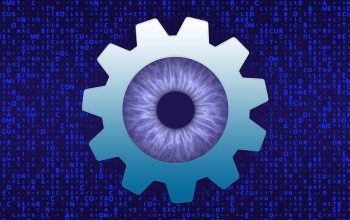The Vehicle Identification Number (VIN), a 17-character code, is a global standard for vehicle tracking and authentication since 1954 (North America) and 1981 (worldwide). It reveals crucial details about manufacturers, models, years, and engine specifications. Understanding VINs enables quick verification of vehicle history, warranties, accident records, and helps prevent the purchase of stolen vehicles, ensuring safety and legal compliance. VIN lookups are critical for identifying fraudulent activities like selling stolen vehicles, with technology like VIN scanners providing instant legitimacy checks against databases. In today's digital age, these measures protect individuals from fraud and reduce vehicle thefts globally.
Vehicle Identification Numbers (VINs) serve as unique codes for every vehicle, but their purpose extends far beyond mere identification. In today’s market, where fraud and manipulation are on the rise, a VIN lookup becomes an indispensable tool for buyers and sellers alike. With stolen vehicles being resold using altered VINs, understanding the VIN’s role in combating fraud is crucial. This article delves into the significance of VINs, exploring how they can protect your investment and guide you through the process of global VIN standards compliance, ensuring peace of mind for all automotive transactions.
- Understanding Vehicle Identification Numbers (VIN)
- VIN's Role in Combating Fraud
- Rising Cases of VIN Manipulation
- Importance of VIN Lookups
- How VIN Scanners Work
- Protecting Against Stolen Vehicles
- Global VIN Standards and Compliance
Understanding Vehicle Identification Numbers (VIN)

A Vehicle Identification Number (VIN) is a unique code composed of 17 characters—letters and numbers—that serves as a fingerprint for every vehicle produced since 1954 in North America, and since 1981 globally. This standardized system allows for consistent identification and tracking of vehicles throughout their entire lifecycle. The VIN provides critical information about the car’s manufacturer, model year, make, engine type, transmission, and other specific features. It’s not just a random sequence; it holds immense value in ensuring vehicle authenticity and safety.
Knowing how to read and interpret a VIN is crucial for anyone in the automotive industry or even an average car buyer. Each character in the code has a purpose, enabling professionals to quickly verify a vehicle’s history, perform warranty checks, and ensure it hasn’t been involved in accidents or fraudulent activities. By understanding VIN standards, you gain a powerful tool to protect yourself from buying stolen vehicles, which often have their VINs altered or tampered with, leading to potential safety hazards and legal issues for the owner.
VIN's Role in Combating Fraud

The Vehicle Identification Number (VIN) serves as more than just a unique code for each vehicle; it plays a pivotal role in combating automotive fraud. Its intricate design includes a standardized format that allows for easy verification of a car’s history and authenticity. Each character within the VIN provides valuable insights into various aspects of the vehicle, such as its manufacturer, model year, and production details. This level of transparency is crucial when it comes to detecting manipulated or altered numbers, which are often employed in fraudulent activities like selling stolen vehicles under false pretenses.
By conducting a VIN lookup, individuals and authorities can instantly access a wealth of information that helps establish the vehicle’s legitimacy. This process reveals any previous accidents, ownership changes, and service records, making it easier to identify suspicious patterns or discrepancies. Moreover, understanding the structure of a VIN enables professionals to quickly spot potential frauds, ensuring that vehicles on the market are genuine and not part of criminal schemes.
Rising Cases of VIN Manipulation

The rise in sophisticated fraud schemes has brought to light a growing concern—the manipulation of Vehicle Identification Numbers (VIN). Criminals are increasingly altering VINs on stolen vehicles, often reselling them under false pretenses. This trend is particularly alarming as it poses a significant risk to consumers and law enforcement alike. With just a few simple modifications, a thief can drastically change the appearance of a vehicle’s history, making it nearly impossible for buyers to detect the fraud.
Recent studies indicate that this practice has become more prevalent, with many cases involving stolen vehicles being sold in the secondary market, often through online platforms. As such, there is an urgent need for increased awareness and advanced verification methods. Fortunately, modern technology offers solutions like VIN scanners and decoders that can swiftly expose these fraudulent activities, ensuring buyers make informed decisions and maintaining the integrity of the automotive industry.
Importance of VIN Lookups

In today’s digital era, where fraud and identity theft are prevalent, Vehicle Identification Number (VIN) lookups have become an indispensable tool for buyers, sellers, and automotive professionals alike. A VIN is a unique code imprinted on every vehicle, serving as its fingerprint. It contains vital information, including the make, model, year, manufacturing location, and more. Conducting a VIN lookup USA or Canada allows users to instantly verify the vehicle’s history, ensuring it hasn’t been reported stolen, altered, or had its identity manipulated in any way.
This process is crucial when purchasing a used vehicle, as it helps protect buyers from unknowingly acquiring stolen property or vehicles with hidden defects. Moreover, dealers and sellers can use VIN scanners to maintain transparency and build trust with customers. By employing these checks, the automotive industry can collectively combat fraud, ensuring road safety and peace of mind for all parties involved in vehicle transactions.
How VIN Scanners Work

VIN scanners work by reading and interpreting the unique 17-character Vehicle Identification Number (VIN) engraved on every vehicle’s chassis. This process involves several key steps. First, the scanner captures a clear image of the VIN, often using high-resolution cameras or advanced optical sensors. Next, specialized software decodes this visual data, breaking it down into its individual characters and digits. Each character corresponds to specific information about the vehicle, such as its manufacturer, model year, assembly plant, and other vital details. Once decoded, this data is compared against vast databases containing legitimate VIN records, allowing the scanner to instantly verify the vehicle’s authenticity.
These scanners leverage advanced technology, including barcode scanning, optical character recognition (OCR), and global positioning system (GPS) tracking, to ensure accurate and reliable results. They’re designed to handle various types of vehicles, from cars and trucks to motorcycles, boats, and even imported vehicles with unique identification systems. By employing VIN scanners, individuals and businesses can protect themselves from fraud, ensure the legitimacy of their purchases, and safeguard their investments in transportation.
Protecting Against Stolen Vehicles

In today’s digital era, where fraudsters are becoming increasingly sophisticated, protecting oneself from stolen vehicles has become more crucial than ever. One of the primary tools in this fight is the Vehicle Identification Number (VIN). A VIN acts as a unique fingerprint for each vehicle, containing vital information about its history and specifications. By conducting a simple VIN lookup, potential buyers can gain access to detailed records, including ownership history, accident reports, and maintenance records. This transparency is a powerful deterrent against fraudsters who often resell stolen vehicles with altered or falsified identification numbers.
When a vehicle is reported stolen, its VIN becomes a critical piece of information for law enforcement and recovery services. A quick cross-reference with legitimate databases allows authorities to identify and track down these stolen assets. For private buyers, using a reliable VIN scanner can be a game-changer, ensuring they make informed decisions and avoid becoming victims of fraudulent transactions. This proactive approach not only protects individuals but also contributes to the overall reduction of vehicle thefts by making it more challenging for criminals to pull off their schemes.
Global VIN Standards and Compliance

The global automotive industry operates under unified Vehicle Identification Number (VIN) standards, ensuring consistency across borders. These standards, established by organizations like the International Organization for Standardization (ISO), dictate the format and structure of VINs worldwide. Every vehicle manufacturer must comply with these norms, making it possible to trace a car’s history regardless of its origin. This international collaboration is crucial in combating fraud, especially when vehicles are bought and sold across borders.
VIN standards not only facilitate identification but also include specific codes that signal a vehicle’s type, model, production year, and even certain manufacturing details. This level of detail allows for precise verification during a VIN lookup process. Compliance with these standards is mandatory, providing a robust framework to safeguard the automotive market and protect consumers from stolen or fraudulent vehicles.
In today’s digital era, where fraud and manipulation are on the rise, understanding and leveraging the power of a Vehicle Identification Number (VIN) is more crucial than ever. By conducting thorough VIN lookups and using specialized scanners, individuals and businesses can protect themselves from purchasing stolen vehicles, ensuring their investments remain legitimate and secure. Staying informed about VIN standards globally is key to navigating this complex landscape, ultimately fostering trust and safety in the automotive industry.



